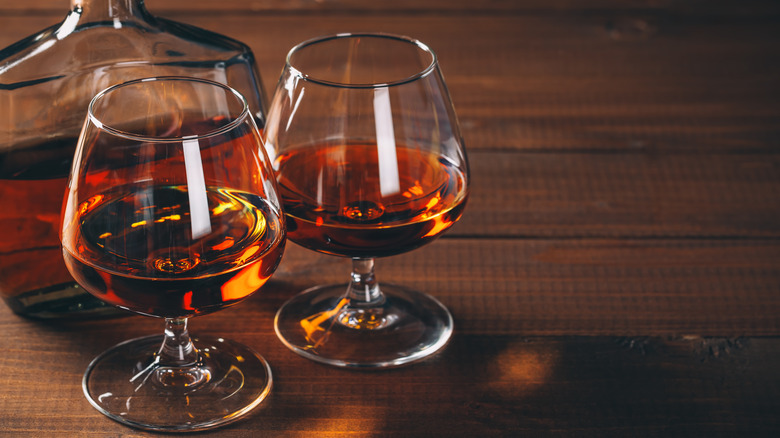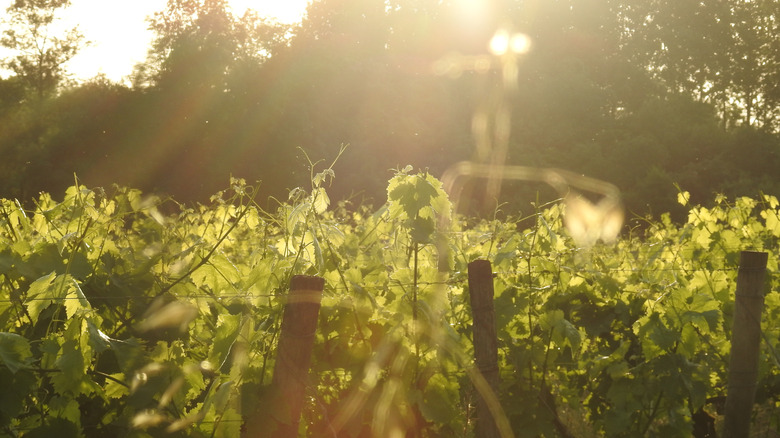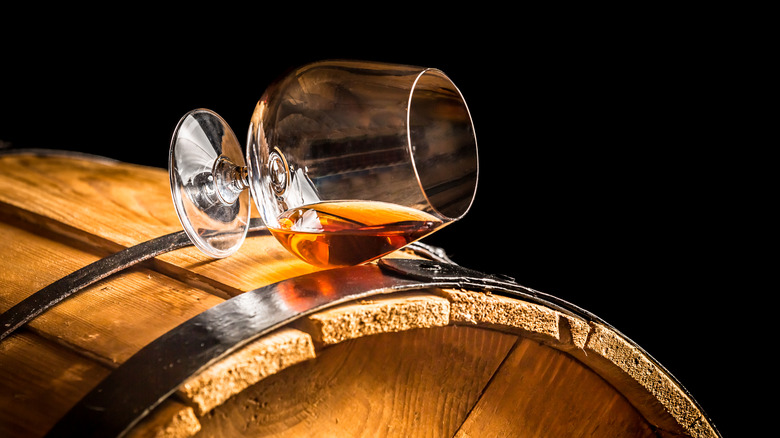What Type Of Alcohol Is Cognac Classified As?
Whither cognac? As you "Pass the Courvoisier" like Busta Rhymes, ponder the sumptuous spirit. The cognac basics: Like its French compatriot, champagne, cognac is a protected category of liquor. Though the French do not purchase much cognac (leaving that to the United States and countries in Asia, arguably tailoring it to those tastes), it could be no more French in origin. It must be made in France — no exceptions. Though American mogul Jay-Z founded a cognac called D'USSÉ, it is made in a French castle. Cognac can only include varieties of grapes grown in the Cognac region of France, and cognac must also be aged in French barrels.
Spirit-ually speaking, it's brandy. But while all brandy is made of fermented fruit, not all brandy is cognac. Applejacks is not a cereal from your youth, it's a brandy made of apples. Black Morello cherries are turned into an eau de vie called Kirsch, another brandy. Calvados, from France's Normandy region, is made of apples and sometimes pears.
Many brandys, one cognac
But as you may not have guessed, cognac begins with wine — white wine, to be exact — before it ends up something else entirely. The Dutch are said to have first distilled French wine, a pattern the French then repatriated by doing it themselves.
However, cognac is not the only spirit made of distilled white wine. Countries worldwide make their own white wine brandy, including Armenia's Ararat, which incorporates other fruits for additional flavor (though their Kanyak is a bit closer to French cognac) while remaining distinct. Spain's Brandy de Jerez comes from white wine, too, aging in sherry barrels. Finally, Armagnac, a brandy from France's Gascony, is also made of white wine.
So what sets cognac apart from the rest of these interesting and complex spirits besides the obvious factors already mentioned?
From the three grapes used to create cognac, the most prevalent is an Italian variety, now thriving in France, called Ugni Blanc. But that grape still does not distinguish cognac from Armagnac, a brandy from a different area of France that also uses the Italian grapes.
How it is distilled matters.
Twice distilled, then blended
A column is still used for Armagnac, while cognac is still made with a copper pot. Additionally, while Armagnac is distilled once, cognac is distilled twice, like whiskey.
Another significant difference is simply the terroir from which the grapes grow. Ugni Blanc from crus — or growing areas — within the cognac region produce subtly different expressions in flavor profile because of the unique climate and geography, in addition to the actual soil. Thus, the same grapes grown in the French Riviera would not produce the Ugni Blanc of the Grand Champagne cru – the growing area here named Champagne because the soil is similar to that in the Champagne area of France.
Last but certainly not least, a simple distilled white wine does not a cognac make. Considered an eau de vies after the second distillation and before aging, cognac must also be blended to create a finished product with a depth of flavor. It must also age for at least two years, though plenty age for much longer. Very Special, or V.S., cognacs contain eau de vies aged two years, but V.S.O.P, or Very Special Old Pale, are aged a minimum of four years. Napoleon indicates six years, and X.O. indicates ten years.
With many layers of unique rules for origin and process, cognac is a genuinely distinctive brandy made of white wine.


